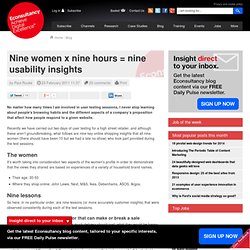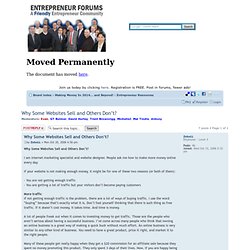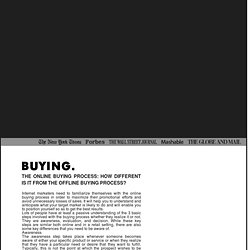

Nine women x nine hours = nine usability insights. No matter how many times I am involved in user testing sessions, I never stop learning about people's browsing habits and the different aspects of a company’s proposition that affect how people respond to a given website.

Recently we have carried out two days of user testing for a high street retailer, and although these aren’t groundbreaking, what follows are nine key online shopping insights that all nine women (there should have been 10 but we had a late no-show) who took part provided during the test sessions. The women It’s worth taking into consideration two aspects of the women's profile in order to demonstrate that the views they shared are based on experiences of a variety of household brand names. Their age: 30-50Where they shop online: John Lewis, Next, M&S, Ikea, Debenhams, ASOS, Argos. Nine lessons So here, in no particular order, are nine lessons (or more accurately customer insights) that were observed consistently during each of the test sessions. 1. 2. 3. 4. 5. 6. 7. 8. 9.
The Customer as God: A Vision for the Future of Commerce. Thesis online shopping behavior. Compare on- and offline brand loyalty. Behavioral Differences Between Consumers. Why Some Websites Sell and Others Don’t? Why Some Websites Sell and Others Don’t?

I am Internet marketing specialist and website designer. People ask me how to make more money online every day. If your website is not making enough money, it might be for one of these two reasons (or both of them): - You are not getting enough traffic- You are getting a lot of traffic but your visitors don’t become paying customers More trafficIf not getting enough traffic is the problem, there are a lot of ways of buying traffic. A lot of people freak out when it comes to investing money to get traffic. Many of these people get really happy when they get a $20 commission for an affiliate sale because they spent no money promoting this product.
But don’t you wish sometimes that you owned one of those websites that make $10,000-$100,000 a month? The reason why most people are afraid of spending money promoting their websites is because their websites don’t convert visitors into paying customers. Buy on or offline? Why buy online. Research offline, buy online. The Online Buying Process: How Different Is It From The Offline Buying Process? by David Hurley.
Internet marketers need to familiarize themselves with the online buying process in order to maximize their promotional efforts and avoid unnecessary losses of sales.

It will help you to understand and anticipate what your target market is likely to do and will enable you to position yourself so as to get the best results. Lots of people have at least a passive understanding of the 3 basic steps involved with the buying process whether they realize it or not. They are awareness, evaluation, and decision. While these key steps are similar both online and in a retail setting, there are also some key differences that you need to be aware of. Awareness The awareness step takes place whenever someone becomes aware of either your specific product or service or when they realize that they have a particular need or desire that they want to fulfill. On the Internet, this phase tends to be much shorter because of the speed and ease of research. Evaluation Decision. Online shopping model. Paying art - model visible. Google Image Result for. Boston SEO Consulting Services.